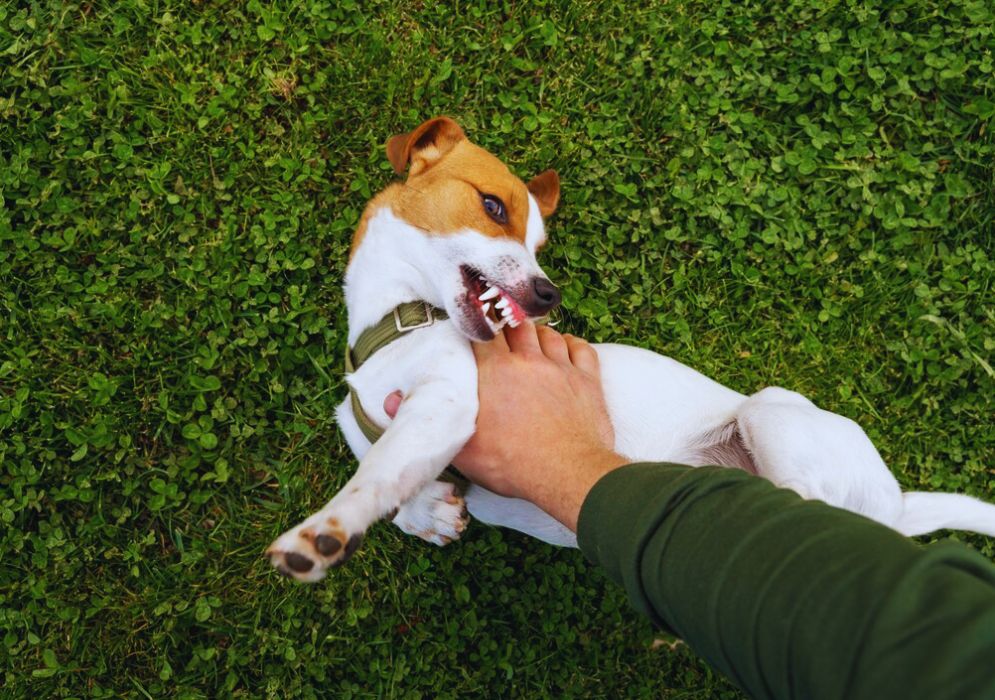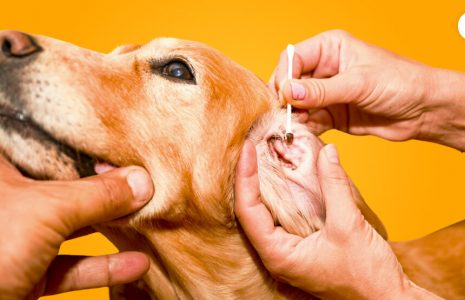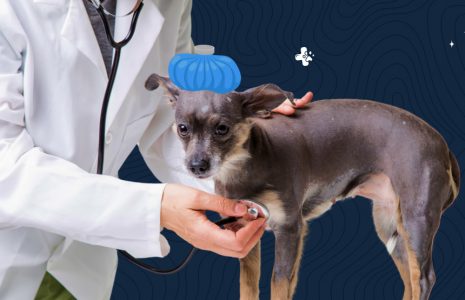What to Do After a Dog Bite Incident: A Sustainable Approach


Dog bites can upset individuals and may also affect how communities care for their environment. In Texas, the law guides those affected by a dog bite, while community safety and sustainable practices protect our neighborhood and natural settings.
This article explains the steps to take following a dog bite and how these actions support a healthy local environment. We also discuss legal options, emphasize responsible pet ownership, and show how taking the right steps can contribute to community sustainability.
Putting Health and Environment First
After a dog bite, your health is the first concern. Dog bites risk infections and other health issues. Getting prompt medical help is necessary for you and helps protect others from similar risks. In many Texas communities, public health services and animal control departments work together. These groups use reports of dog bites to design programs that protect both people and animals and to maintain a balance with nature.
By reporting the incident, you help local authorities learn about potential risks in your area. This report not only assists in gathering facts for your legal case but also supports sustainable community practices. Communities that monitor and manage animal-related issues better plan for safe, green, and sustainable neighborhoods.
Reporting the Incident
Reporting a dog bite immediately brings several benefits. When you share details with local animal control or the police, you help create a record that is important for your case and community safety. This record also helps city planners and environmental health departments work together to improve local public spaces, making them safer and greener.
- When calling to report the bite, give all the details, including:
- The place and time of the incident
- A description of the dog and its owner
- Information on the dog’s vaccination status
This record supports a legal claim and contributes to the community’s efforts to care for public spaces. A safe community encourages residents to maintain local parks and public areas in a sustainable way.
Collecting Evidence for a Sustainable Community
Once you have taken care of your health and reported the incident, gather as much evidence as possible. This evidence supports your legal claim and helps local agencies learn more about how animals interact with community spaces. Good evidence collection can influence future policies on pet ownership and the use of public areas for recreation.
- Record photographs of the injury, the scene, and any damage to personal items
- Collect contact details for anyone who witnessed the incident
- Save all medical records and bills from the treatment received
- Write down the dog owner’s information, such as license details and vaccination records
Keeping a personal journal about the event is useful for both your legal case and community record. The detailed notes you record can help community leaders see how pet incidents may affect local areas, prompting discussions on animal control and urban planning that align with sustainable practices.
Texas Dog Bite Laws and the Environment

Texas law handles dog bite cases mainly through two ideas: the “one-bite” rule and negligence. Neither rule exists in isolation—local court decisions also support community goals for public safety and environmental care.
The One-Bite Rule
Under the one-bite rule, dog owners can face full responsibility if they already had warning signs about their animal’s behavior. Courts uphold that if an owner noticed dangerous behavior—even one incident—the owner must ensure that the dog’s future behavior does not threaten personal safety and communal green spaces. When owners are held accountable, communities are encouraged to seek help from counseling, animal behavior specialists, or local environmental programs that guide responsible pet care.
Liability Based on Negligence
If no warning signs exist, negligence is the key factor. Victims need to show that an owner did not follow basic care practices and that this carelessness led directly to the injury. For instance, if an owner allows their dog to roam free in public parks without proper supervision, and the dog then causes harm, this can be seen as negligence. Such cases drive home the need for better local rules on animal control. When communities enforce these rules, urban spaces remain safer and cleaner.
Under Texas rules, you have two years from the time of injury to file a lawsuit. This time frame supports thorough fact collection and allows community agencies to strengthen their measures for public and environmental health.
Legal Options and Community Sustainability
If you choose to take legal action, an experienced lawyer can help you understand the process. A lawyer will guide you through gathering evidence and interacting with insurance companies. While pursuing a legal remedy, it is important to know that responsible pet ownership and fair treatment under the law also support sustainable local policies. These policies encourage safe interaction with urban wildlife and protect the quality of public spaces.
For example, if you live in Houston and have been affected by a dog bite, you may choose to consult with a Houston dog bite lawyer. A lawyer with expertise in these cases can explain available options while showing how your case can lead to improvements in community safety and environmental care.
A lawyer’s role extends beyond legal representation. They help build a case that benefits you while supporting larger community goals. Your case might prompt more detailed local animal control routines that combine public health data with urban planning. This combination helps create better policies that protect people and the environment.
Defenses in a Dog Bite Case
Both victims and dog owners can present defenses in a dog bite case. For example, an owner might claim that they had no warning signs about the dog’s conduct. To establish fault, the victim will show that the owner should have been aware. In some cases, the victim might share part of the responsibility if the attack happened because of actions like provoking the dog in a community space.
Texas law adjusts compensation by looking at these factors, ensuring that every incident contributes to learning and improving community practices. A careful look at these defenses can help state agencies develop better strategies for preventing future incidents, which is good for everyone and the environment.
Responsibilities of Dog Owners for a Sustainable Future
If you own a dog, a biting incident affects not only your family but also your neighbors and local green spaces. Responsible pet ownership is a key element of community sustainability. When your pet acts out, it disrupts the balanced use of public areas such as parks and recreational zones that everyone enjoys.
If your dog bites someone, you should first help the injured person get medical care. Then, report the bite to local authorities. Contact your insurance provider because homeowner or renter policies may help cover the cost. By acting quickly, you also help shape local policies that will drive better animal control programs and promote safer public spaces.
Dog owners are encouraged to work with community groups that focus on animal welfare and environmental care. Regularly, these groups promote training classes and awareness on responsible pet behavior that reduces the chance of incidents. When dog owners invest in proper training and safety planning, a better balance is achieved between enjoying animal companionship and sustaining our communal green areas.
Long-Term Considerations for Personal and Community Well-Being
The impact of a dog bite may be felt for a long time. Physical injuries may heal, but mental effects, such as fear and anxiety, can stay with you. Many victims have lasting concerns about their safety in local environments. These feelings highlight the need for communities to build trust between residents and animal control services.
Keeping a journal of your recovery might help you in court and shows community authorities the personal side of these incidents. A well-kept record provides insight into both the injury’s cost and the ongoing need for policy adjustments. Besides medical records, note any counseling, therapy, or community support groups you join. This shared experience can lead to improvements in local parks and safe walking areas.
Communities that learn from incidents work to build sustainable solutions. With updated safety guidelines and improved animal control measures, neighborhoods become better places to live and naturally greener. Sustainable public spaces not only improve individual well-being but also drive community interest in environmental care.
Filing a Legal Claim with an Eye on Sustainability
When you file a legal claim after a dog bite, proper organization of your evidence is essential. The steps include filing a formal report, gathering all related documents, and presenting a detailed timeline of events. Each part of this process helps highlight the importance of clear communication between you and community officials.
Your case might show that a dog bite incident is not simply a private matter. Instead, it can serve as a learning experience for improving community health policies and urban planning. When legal cases include evidence about animal behavior and public safety, local authorities can use that data to strengthen rules that protect both people and ecosystems.
- Evidence that shows the dog owner knew or should have known about the dog’s past behavior
- Documentation of your injuries, medical expenses, and any follow-up treatments
- Statements from eyewitnesses who can validate details of the incident
- Records of any previous incidents involving the dog that were reported in your neighborhood
By ensuring that all evidence is kept clear and in order, you help build a case that benefits you and influences local improvements. The lessons learned from each incident help shape future guidelines that keep public areas safe and in tune with sustainable community goals.
Insurance, Settlements, and Community Impact
Insurance providers often handle dog bite compensation claims. The dog owner’s insurance policy typically covers many of the costs associated with medical care, lost work time, and recovery expenses. Sometimes, settlements might be low, not reflecting all the impact on personal health or community safety.
In 2019, the average dog bite settlement in the US was around $44,000. While every case is different, this figure shows that dog bites have significant financial impacts. An adequate settlement ensures that you can recover lost earnings and pay for necessary treatments. In turn, fair settlements prompt improvements in local animal control practices and can lead to better safety measures in public parks, contributing to overall community sustainability.
Persistent issues with pet control may lead to more official policies and urban changes that enhance the environment. When an insurance company and legal representatives work together, the outcome not only compensates you but also serves as an example for communities. Over time, these actions push local officials to review animal control rules and to update public space safety measures in harmony with environmental goals.
How the Courts View Dog Bite Cases in a Sustainable Neighborhood
When Texas courts consider dog bite cases, they review the owner’s responsibility and the conditions in which the bite occurred. Courts examine evidence, compare the actions of both the owner and the victim, and decide how to adjust damages. This process encourages both parties to minimize risks in shared spaces.
A balanced approach in court ensures that the decision contributes to both proper legal resolution and improved community practices. A fair decision also prompts local agencies to support programs that offer greater animal control education, leading to a better attitude toward public spaces. These actions together help maintain sustainable communities that are safe and welcoming for everyone.
Final Thoughts: Safety, Law, and a Sustainable Future
A dog bite is a difficult experience. It is not just a legal challenge or a health matter; it is also an event that has consequences for the environment and the quality of life in local communities. In Texas, responding quickly with the right actions—such as securing medical help, reporting the incident, and gathering evidence—supports a strong legal case and helps improve public spaces.
Taking the right legal steps protects you and also encourages community leaders to invest in sustainable practices. With proper animal control measures and responsible pet ownership, communities benefit from safer parks and public areas that reflect a respect for the environment. Every report and every legal decision matters in building a future where public health and environmental care go hand in hand.
If you find yourself involved in a dog bite incident—whether as a victim or as a pet owner—act quickly and responsibly. Your actions not only help your immediate recovery but also contribute to broader efforts to design communities that are safe, healthy, and sustainable. Remember, a proactive response can set the stage for improvements in local policies and urban planning. Both aspects are key to a balanced and vibrant community.
By following these steps and staying informed about your legal rights and responsibilities, you help create a better environment for yourself and your neighbors. The cooperation between health services, legal experts, and local officials ultimately leads to a safer and greener Texas.








Leave A Comment